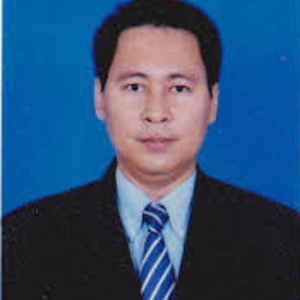Interaksi Energetik Guru dan Siswa pada Pembelajaran Abad 21
Energetic Interaction of Teachers and Students on 21st Century Learning
DOI:
https://doi.org/10.33084/anterior.v18i2.456Keywords:
Interaction, Energetic, 21st Century LearningAbstract
Learning requires harmonious interaction between teachers and students. Communication is a type of action that occurs when two or more objects influence or have an effect on each other. Learning through less dynamic interactions can cause an imbalance in the transfer of learning. Tendencies that arise are students will know a lot about something, but become less have a system of values, attitudes, interests and positive appreciation of what is known. Children will experience intellectual development unbalanced by personality maturity, giving birth to a specialist figure who is less concerned with the surrounding environment and prone to value distortions. Students will practice violations such as happy fighting with friends, lack of respect for others, and lack of courtesy. The academic atmosphere in elementary schools for students to be able to learn effectively is a condition where students can collaborate, cooperate, communicate using any direction there is no fear and feel even protected, and they think treated reasonably regardless of ethnicity, religion, race, class, and gender so as to achieve desired goals both national education goals and primary school goals. Energetic interactions between teachers and students in schools must be based on functional relationships first between the teacher and students, meaning students feel the teacher is a parent and a friend who can be invited to interact without fear but still respect. Fearless but respectful interaction is needed because it fits with one of the 21st-century learning skills, collaboration. Good collaboration causes learning to be fun, so learning becomes effective.
Downloads
References
Arends, R.I. & Kilcher, A. 2010. Teaching for Student Learning: Becoming an Accomplished Teacher. Newyork: Routledge. p. 326.
Damsar. 2015. Pengantar Teori Sosiologi. Jakarta: Kencana. p. 163.
Darmadi, H. 2014. Metode Penelitian Pendidikan dan Sosial: Teori Konsep Dasar dan Implementasi. Bandung: Alfabeta. p. 190.
Fernanda, M.M., Sano, A., & Nurfarhanah. 2012. Hubungan antara Kemampuan Berinteraksi Sosial dengan Hasil Belajar. Konselor: Jurnal Ilmiah Konseling, 1, 1-7.
Ibrahim, M. 2012. Modul Hakikat Kurikulum dan Pembelajaran. Jakarta: UT Press.
Kholisotin, L., & Lastaria, L. 2017. Fungsi Kesantunan Berbahasa dalam Interaksi Guru dan Murid di Lingkungan MIS Al Jihad Palangka Raya. Anterior Jurnal, 17, 52-59.
Masruhani, S.N. 2016. Pola Interaksi Guru dan Siswa pada Pendidikan Islam Klasik. Qathrunâ, 3, 143-160
O’Neil, W.F. 1981. Educational Ideologies: Contemporary Expressions of Educational Philosophies. California: Goodyear Publishing Company. Alih bahasa: Naomi, O.I. 2008. Ideologi-Ideologi Pendidikan. Yogyakarta: Pustaka Pelajar. pp. 14-15.
Prasetiawati, E. 2017. Urgensi Pendidikan Multikultur untuk Menumbuhkan Nilai Toleransi Agama di Indonesia. Tapis: Jurnal Penelitian Ilmiah, 1, 272-303.
Prasetyo, I. 2007. Peran Pamong Belajar Dalam Meningkatkan Motivasi Warga Belajar Program Paket B. Diklus: Jurna; Pendidikan Luar Sekolah, 6, 42-86.
Rahmaniati, R. & Supramono, S. 2015. Pembelajaran I–SETS (Islamic, Science, Environment, Technology and Society) terhadap Hasil Belajar Siswa. Anterior Jurnal, 14, 194-200.
Rehalat, A. 2014. Model Pembelajaran Pemrosesan Informasi. Jurnal Pendidikan Ilmu Sosial, 23, 1-11.
Riyanta, T. 2016. Mengembangkan Budaya Mutu Sekolah melalui Kepemimpinan Transformasional. Jurnal Manajemen Pendidikan, 12, 37-48.
Setyosari, P. 2015. Metode Penelitian Pendidikan dan Pengembangan. Jakarta: Prenadamedia Group. p. 117.
Shalberg, P. 2011. Finnish Lessons: What Can the World Learn from Educational Change in Finland? Newyork: Teachers College Press. Alih bahasa: Muchlis, A. 2014. Finnish Lessons: Mengajar Lebih Sedikit, Belajar Lebih Banyak ala Finlandia. Bandung: Penerbit Kaifa. p. 292.
Sukmana, A. 2018. Mengembangkan Pembelajaran Abad ke-21 di Unpar. Majalah Parahyangan, 5, 14-15.
Susilo, S.V. 2016. Optimalisasi Kompetensi Guru dalam Membangun Indonesia Emas dalam Perspektif Pendekatan Sosial Budaya. In Proceeding of The International Seminar on Philosophy of Education, Universitas Pendidikan Indonesia, Bandung, 10 Desember 2016. pp. 81-87.
Suyanto & Jihad, A. 2013. Menjadi Guru Profesional: Strategi meningkatkan Kualifikasi dan Kualitas Guru di Era Global. Jakarta: Erlangga. pp. 98-99.
Suyati, E.S. 2016. Pengelolaan Manajemen Koperasi Sekolah. Pedagogik: Jurnal Pendidikan, 11, 88-96.
Tedjoworo, H. 2018. Pembelajaran Kultural: Berfilsafat dan Berteologi “Dari Bawah.” Majalah Parahyangan, 5, 8-11.
Triyono, M.B. 2017. Tantangan Revolusi Industri 4.0 (i4.0) bagi Pendidikan Vokasi. In Proceeding Semnasvoktek, Denpasar Bali, 28 Oktober 2017. 1-5.
Widodo, W. 2016. Wujud Kenyamanan Belajar Siswa, Pembelajaran Menyenangkan, dan Pembelajaran Bermakna di Sekolah Dasar. Ar-Risalah: Media Keislaman, Pendidikan dan Hukum Islam, 14, 22-37.
Zubaedi. 2009. Pendidikan Berbasis Masyarakat: Upaya Menawarkan Solusi terhadap Berbagai Problem Sosial. Yogyakarata: Pustaka Pelajar. p. 2-3.

Downloads
Published
How to Cite
Issue
Section
License
All rights reserved. This publication may be reproduced, stored in a retrieval system, or transmitted in any form or by any means, electronic, mechanical, photocopying, recording.












